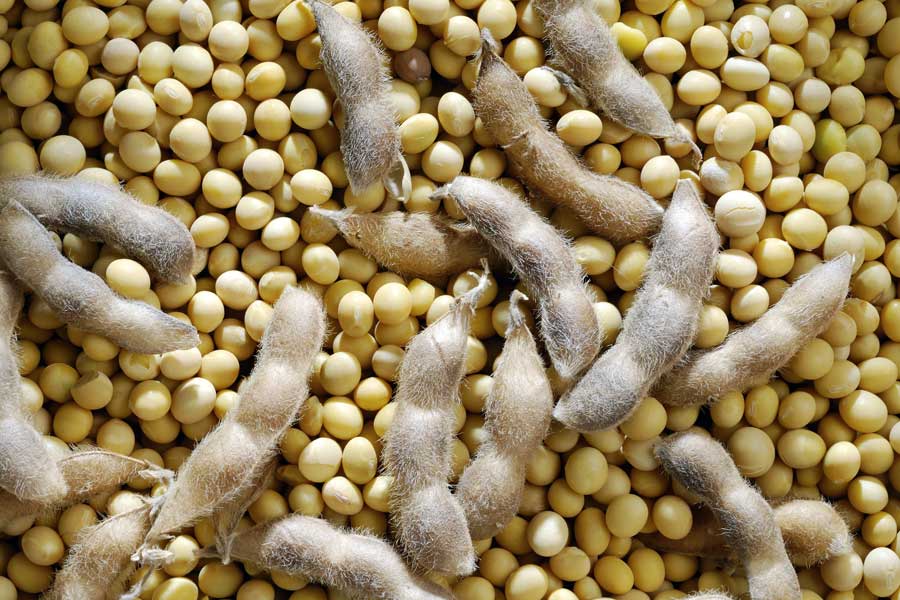Feed markets and the ‘big oil deficit’

Glacier FarmMedia – Food and feed are the main sources of global demand for crops but climate-related policies could tip that apple cart.
Read Also


Corporate help for soil health is on its way
Corporate interest in sustainable agricultural practices has grown in recent years, along with money toback it. Why it matters: Food…
Governments are making legislative overtures to boost production of biofuels. In Canada, that includes the Canadian Clean Fuels Regulation, which lays out rules for fuel production and aims to encourage development of cleaner fuels and limit greenhouse gas emissions.
Why it matters: Global market pressures can have a trickle-down effect that changes local input prices.
Governments around the world are enacting similar mandates and the livestock feed sector expects spillover impacts from those shifts.
According to Aaron Hanson, a senior economist with GlobalData’s agriculture division (formerly LMC International), 2010 global production of biofuels was 20 million tonnes a year. That’s expected to explode with the advent of new fuel mandates.
“If those mandates are met, we have something like 110 million tonnes of biofuels that we’re looking at supplying,” he told the Animal Nutrition Conference of Canada in Winnipeg May 15.
That will be a dramatic shift for a key indicator of feed prices. Hanson said vegetable oils and meat are two main factors that underpin that market.


photo:
Greg Berg
Oilseed sectors like canola have been effusive about their expectations for biofuels. In February, Chris Vervaet, executive director of the Canadian Oilseed Processors Association, suggested that canola crush capacity could grow “from 11.3 million metric tonnes today to 18 million metric tonnes in three or four years.”
While canola oil is gearing up for an expanded market, canola meal is pulled into the feed stream, in particular for dairy, pigs and poultry. Meat prices have also been rising.
The first biofuel wave
Hanson divides the biofuel boom into two waves. The first happened in the 2000s and was focused on production of ethanol and biodiesel using food-based crops like corn.
“In the 2000s, when the first biofuels wave began, there was an extra element of stress placed on vegetable oil demand,” he said, and palm oil stepped in to fill the market niche.
“Palm is far and away the best and most efficient source in terms of area in use for providing vegetable oils,” said Hanson.
Soybeans are at the opposite end of the spectrum because more of the seed is meal.


photo:
Don Norman
Pressure on oils has played out in crop production across North America.
“The supply of grain crops has been growing very slowly over the past couple of decades, with the exception of corn because of its use for animal feed,” he said.
“Whereas the growth of oilseeds is much faster as people start to consume more vegetable oils. Palm grew faster than everything else because it was trying to satisfy both vegetable oil demand for food and biofuel demand.”
But the massive increase in acreage dedicated to palm cultivation was criticized for its environmental impacts in Indonesia and Malaysia. Growth in acres of palm production plummeted as a result.
“You can say that the success of palm has been its own downfall,” said Hanson. “It was too rapid, and there were too few constraints, so there was a backlash.”
The second wave
The mandates behind the current wave aim to avoid the negative food-versus-fuel debates and unpopularity that haunted the palm oil boom.
They employ a new series of feedstocks for biofuel: waste oils like tallow and used cooking oils, as well as synthetic fuels. But Hanson said it’s unlikely these feedstocks will be able to meet demand, at least in the short-term.
“For the rest of this decade, we expect it to lean very heavily on food crops.”
That raises the question of where the oil will come from. Because of its efficiency as an oil-producing plant, palm is the obvious choice, but the backlash makes it untenable. It would also take years to effectively ramp up production.
“A palm planted today won’t be producing at peak yield for 10 years,” Hanson said. “So, in the near term, palm oil yields are not going to save the world from this big oil deficit.”
Bridging the production gap will fall to oilseed crops, likely canola and sunflower seeds.
“But agronomic constraints mean that the resulting growth will not be enough to plug the gap, and that means vegetable oil demand starts to fall back on soybeans.”
That could flood the feed market with meal. Soybeans are less than 20 per cent oil. They’re mostly meal, and the production of enough soybeans to meet oil requirements could leave a glut of soy meal on the table, let alone any meal surplus from increased canola production.
“Very broadly, that means you will have protein meal supply outstripping demand at quite a significant rate.”
Hanson doesn’t think that inbalance will get as bad as implied by the mandates because it’s unlikely all of those mandates will be met, he said. Still, it will be enough to exert influence on feed markets.
“You’re going to have protein meal growing faster than demand, whether it’s quite fast or very fast … And feed operations are likely to benefit from lower meal prices in the next five to 10 years or so.”
Source: Farmtario.com

